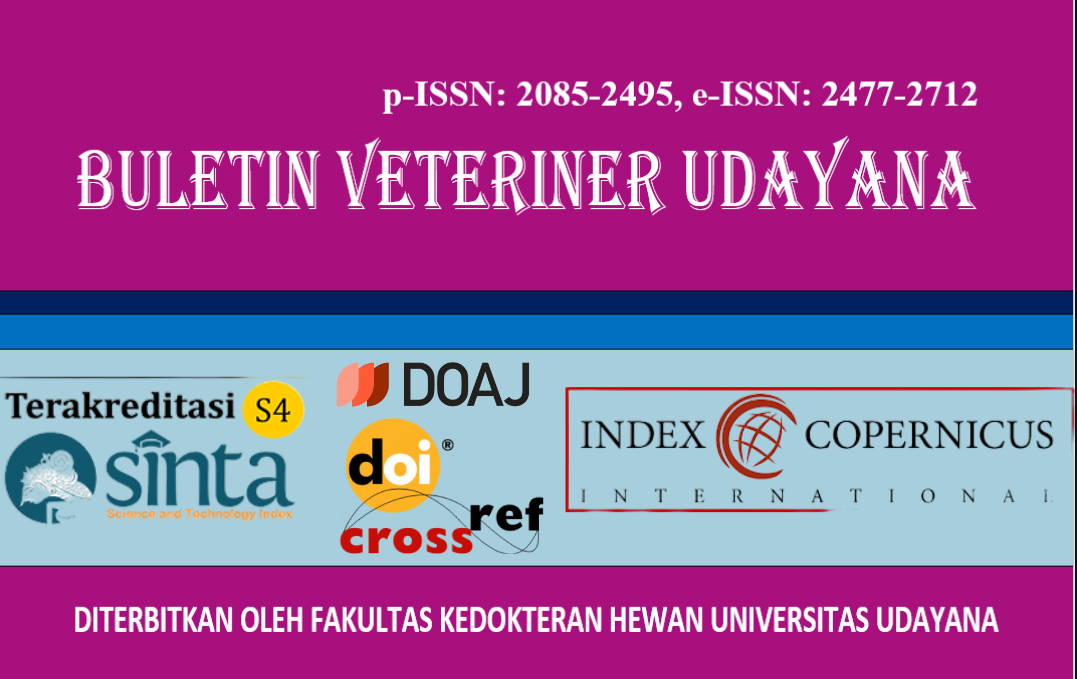ISOLATION OF GRAM-POSITIVE BACTERIA FROM THE TONSILS OF WEANED LANDRACE PIGS BASED ON HEMOLYSIS TYPE
DOI:
https://doi.org/10.24843/bulvet.2025.v17.i02.p13Keywords:
Porcine tonsils, Gram-positive, bacteria, haemolysisAbstract
Tonsils of pigs as the upper respiratory tract are the initial gateway for bacteria to enter the body located at the junction of the oropharynx and nasopharynx and have an important role in the immune system. The study was conducted to determine the level of pathogenicity of Gram-positive bacteria based on the type of hemolysis in post-weaning landrace pigs. It is important to know that pathogenic bacteria have great potential for zoonosis. This study conducted a primary test with a Gram staining test and also a hemolysis test to determine the potential level of pathogenicity. Isolation can be done from the tonsils of post-weaning landrace pigs by swabbing the tonsil mucosa. From the tests carried out, 74 Gram-positive isolates were identified from the 88 existing isolates. The results obtained showed a percentage that described the pathogenicity of the existing bacteria including 43% or (32/74) isolates were α-hemolytic, 42% or (31/74) isolates were β-hemolytic, and 15% or (11/74) were γ-hemolytic. The type of hemolysis produced from a series of tests showed different results which were presented in the form of a percentage. The significant percentage of α-hemolysis and β-hemolysis indicates that there is a large potential for pathogenicity in the area where post-weaning pig tonsil swab samples were taken, namely from Selat Village with the SS code, Sangeh Village with the SGS code and also Taman Giri Village with the STG code. Further research needs to be done to be able to provide education to the community and to find out the bacterial species from the identification of Gram-positive bacteria which are seen based on the type of hemolysis, namely those with α-hemolysis, β-hemolysis, and γ-hemolysis related to virulence in the pathogenicity of infection.




